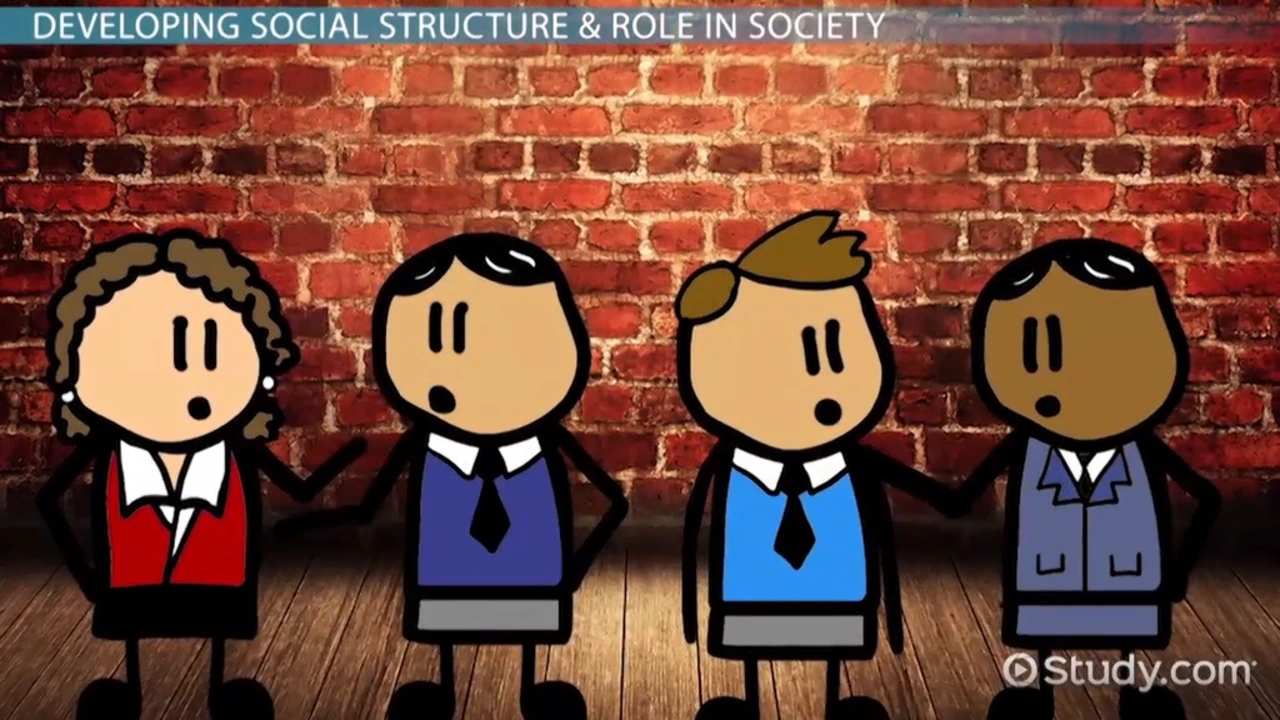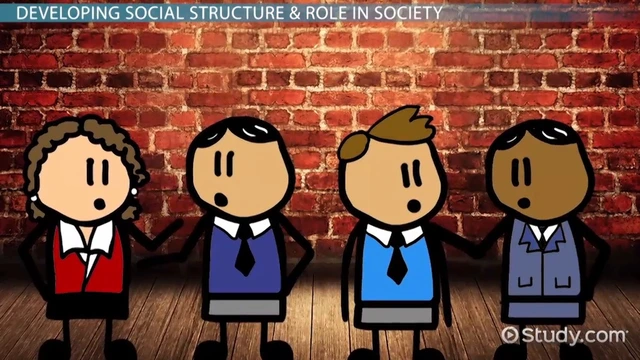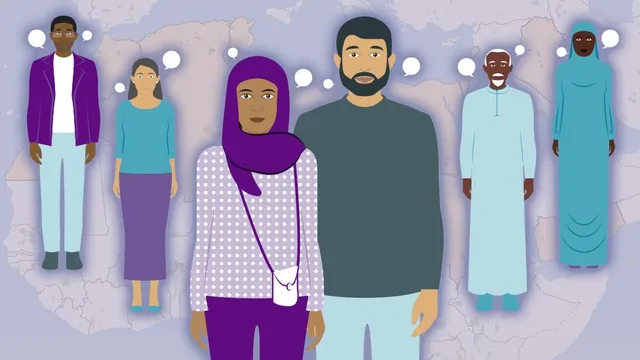
What is social structure in sociology?
Exploring the Different Components of Social Structure in Sociology
Social structure is a concept in sociology that can be used to explain various features of a society. It is an important concept in the field of sociology because it helps us to understand why certain aspects of a society are the way they are. In this article, we will explore the different components of social structure in sociology, and how they can affect a society.
Cultural Factors
Cultural factors are one of the most important components of social structure in sociology. These factors can include things like language, religion, values, beliefs, and customs. Cultural factors can have a significant impact on a society, as they can shape the way people interact with one another, and how they think about certain topics. They can also affect the way people make decisions, and how they live their lives.
Economic Factors
Economic factors are also important components of social structure in sociology. These factors can include things like income level, job availability, wealth distribution, and access to resources. Economic factors can influence the way people live their lives, as they can affect the amount of money they have available to them, and the type of lifestyle they can lead. They can also affect the way people view the world, and their ability to take advantage of opportunities.
Political Factors
Political factors are also important components of social structure in sociology. These factors can include things like laws, regulations, and governmental policies. Political factors can have a major impact on a society, as they can shape the way people interact with one another, and how they view the world. They can also influence the way people vote, and their access to resources.
Social Interactions
Social interactions are also important components of social structure in sociology. These factors can include things like family dynamics, friendships, and other types of relationships. Social interactions can shape the way people interact with one another, and how they view the world. They can also affect the way people make decisions, and how they live their lives.
Technology
Technology is also an important component of social structure in sociology. Technology can include things like the internet, computers, and other forms of technology. Technology can have a major impact on a society, as it can shape the way people interact with one another, and how they view the world. It can also affect the way people make decisions, and their access to resources.
Analyzing the Impact of Social Structures on Society
Social structures are the systems of relationships, norms, and regulations that shape our lives and the lives of those around us. These structures are essential for organizing and governing social life, and they have a profound influence on how our society functions. In this article, we'll look at the impact of social structures on society, and how they can be used to bring about positive change.
The Role of Social Structures in Society
Social structures are the foundation of our society and play a critical role in shaping our behavior, beliefs, and values. They provide a sense of order, predictability, and stability to our lives, allowing us to interact with each other in a structured and orderly way. Social structures also provide rules and regulations that govern our interactions with each other and the world around us. These rules and regulations can be used to promote justice and fairness, prevent the spread of certain diseases, and protect the environment.
The Impact of Social Structures on Society
The impact of social structures on society is immense. Social structures can be used to promote positive change by encouraging cooperation and collaboration, providing resources to those in need, and giving people a sense of belonging. They can also be used to discourage negative behavior, such as discrimination and prejudice. Social structures can also be used to reduce inequality and promote social justice.
The Impact of Social Structures on Individuals
Social structures also have a profound influence on individuals. They can influence our beliefs, values, and behavior, as well as our ability to access resources and opportunities. Social structures can also shape our understanding of the world and our place in it. As a result, the impact of social structures on individuals can be far-reaching and profound.
Conclusion
In conclusion, social structures play a critical role in shaping our society and the lives of individuals within it. They provide order, stability, and predictability, as well as a sense of belonging and community. They can also be used to promote positive change and discourage negative behavior. Social structures are essential for the functioning of our society and should be used to promote justice, fairness, and equality.
Understanding The Role Of Social Structures In The Development Of Human Interactions
Social structures have an immense impact on the development of human interactions. They provide a framework for the way people interact with each other and shape the way they perceive the world. By understanding the role of social structures, we can better understand the motivations behind human behavior.
In sociology, social structure is a term used to describe the patterns of relationships between individuals, groups, and institutions. These patterns are determined by the cultural, political, and economic environment in which they live. Social structures are characterized by certain norms and values, which dictate the way people interact with each other. These norms and values are shaped by the culture, economic system, and political system of the society.
Social structures also determine the level of power and influence people have over each other. This can range from the ability to control resources to the ability to control physical and emotional interactions. Power and influence can be used to create a structure of privilege and oppression in a society. This privilege and oppression can be seen in the unequal access to resources, unequal political power, and unequal access to education.
Social structures also affect the way people interact with each other. For example, the power dynamics between genders, races, and classes can shape the way people communicate with each other. Similarly, social structures can limit the ability for people to form meaningful relationships by creating barriers between different groups. This can lead to a lack of trust between individuals and groups, making it difficult to build meaningful relationships.
Finally, social structures can influence the way people think about themselves and their place in society. This can lead to a feeling of powerlessness and a lack of self-confidence. It can also limit the opportunities available to people, as certain social structures can restrict access to resources and opportunities.
By understanding the role of social structures, we can better understand the way people interact with each other and the world. This understanding can help us to create a more equitable society, one that recognizes the diversity of its members and provides equal opportunities for everyone.
Examining the Different Types of Social Structures in Different Cultures
In sociology, social structure is the patterned social arrangements in society that are both emergent from and determinant of the actions of the individuals. Understanding the different types of social structures and how they vary in different cultures is important for both sociologists and social scientists.
Types of Social Structures
The most common type of social structure is the family. This unit is the basic building block of most societies and is a powerful influence on the individual's life. Other types of social structures include clans, tribes, chiefdoms, and states. Each of these is distinguished by its size, organization, and complexity.
Family Structures
The family is the primary social structure in most cultures. It is composed of individuals bound together by blood, marriage, or adoption. Family structures vary from culture to culture, and even from family to family. In some societies, families are nuclear, composed of a father, mother, and children. In other societies, extended families may be more common, involving multiple generations living together in one household.
Clans and Tribes
Clans and tribes are the oldest type of social structure. These are typically small and close-knit groups of people who are related by either blood or marriage. Clans and tribes are characterized by a strong sense of loyalty and solidarity. They have well-defined roles and responsibilities, and they often have a strong sense of identity and culture.
Chiefdoms
Chiefdoms are a type of social structure that is found in many cultures. In this type of structure, a single person, usually a powerful leader, is in charge. This leader is responsible for making decisions for the group and maintaining order. Chiefdoms often have complex political and economic systems, and they may have a hierarchical social structure.
States
States are the most complex type of social structure. These are large, politically organized societies that have a centralized government and a legal system. States have a hierarchical structure, with a powerful central government and a variety of institutions, such as courts, schools, and universities. States also have a strong sense of identity and culture, and they often have a common language.
Conclusion
Social structure is an important concept in sociology and social science. Understanding the different types of social structures and how they vary in different cultures is essential for understanding the complexities of human behavior. It is also important for understanding how social change occurs in different cultures.
Investigating the Changes in Social Structures Over Time
What is social structure in sociology? Social structure is a concept used to explain the organized patterns of social relationships found in human societies. It can refer to the various patterns of relationships between individuals, groups, and institutions. It can also refer to patterns of relationships among different social categories, such as age, gender, and ethnicity. Social structure is an important element in understanding the behavior of individuals and groups within a society.
In sociology, social structure is studied over time in order to investigate changes in the relationships between individuals, groups, and institutions. Studying the ways in which social structure changes over time can provide insight into the ways in which individuals and groups interact with one another, and how these interactions shape the development of a society. Additionally, studying social structure over time can help to identify the social conditions which favor certain behaviors or outcomes. By understanding how social structure changes over time, sociologists can better understand how society functions and how various social policies may affect it.
In studying the changes in social structure over time, sociologists can investigate how individuals and groups interact with one another, and how these interactions shape the development of a society. Additionally, sociologists can investigate the ways in which different social forms, such as gender or ethnicity, interact with one another. By examining how different social forms interact with one another over time, sociologists can gain a better understanding of how these social forms shape the development of a society. Additionally, by examining how social structures change over time, sociologists can gain insight into the ways in which social policies may influence the development of a society.
Sociologists also investigate the ways in which specific institutions, such as the economy or the government, interact with other social forms and institutions, and how these interactions shape the development of a society. By examining the ways in which different institutions interact with one another over time, sociologists can gain a better understanding of how these institutions shape the development of a society. Additionally, by examining how different institutions interact with one another over time, sociologists can gain insight into the ways in which different social policies may influence the development of a society.
By studying changes in social structure over time, sociologists can gain useful insight into the ways in which individuals and groups interact with one another, and how these interactions shape the development of a society. Additionally, by examining how different social forms, institutions, and policies interact with one another over time, sociologists can gain valuable insight into the ways in which various social policies may affect the development of a society. Through studying the changes in social structure over time, sociologists can gain valuable insight into the ways in which different social policies may influence the development of a society.







